Launched in 2017, Healthy Brains, Healthy Lives' New Recruit Start-Up Supplements program provides start-up supplementary funding to hiring faculties at McGill University for the recruitment of new standout faculty members whose research aligns with HBHL's scientific priorities. With these funds, the hiring faculties are able to compete with other institutions on a global level to bring fresh talent to McGill.
The following 27 new recruits have joined McGill's faculty as a result of the program's efforts so far, with HBHL contributing funding ranging from $92,000 - $400,000 in each case. Grants are awarded based on an application from the Dean of the hiring faculty. The amount is negotiated between the hiring faculty and the candidate. The HBHL portion of the start-up grant listed below may not constitute the full amount of the recipient's start-up funding.
- Udunna Anazodo
- Sam Audrain
- Pouya Bashivan
- Danilo Bzdok
- Xiaoqian Chai
- Mahsa Dadar
- Bruce Doré
- Manuela Ferrari
- Tasmia Hai
- Yasser Iturria-Medina
- Katie Lavigne
- Yue Li
- Paul Masset
- Michael MacKenzie
Udunna Anazodo
Intelligent PET imaging for mapping brain health: from molecules to mind

Research area: Neuroimaging
HBHL Research Theme: Mechanistic Models of Neurodegenerative Disorders (Theme 2)
Hiring department and faculty: Neurology and Neurosurgery, Faculty of Medicine and Health Sciences
HBHL funding: $303,000
HBHL award start date: January 1, 2022
My lab combines positron emission tomography (PET) and magnetic resonance imaging (MRI) techniques to provide a multimodal imaging approach for detecting subtle and early changes in brain function, physiology and neurochemistry. Our current focus is on the optimization of next-generation ultra-high-resolution PET imaging systems to permit molecular brain imaging with unprecedented spatial precision and sensitivity. Over the next five years, we will develop leading-edge intelligent PET image reconstruction and image analysis tools that leverage advances in machine learning to enable brain imaging in clinical populations at ultra-high spatial resolution and unmatched sensitivity.
Sam Audrain
Diverse approaches to understanding the neural basis of memory

Research area: Plasticity and learning
HBHL Research Theme: Applied Cognitive Neuroscience of Brain Plasticity (Theme 3)
Hiring department and faculty: Department of Neurology and Neurosurgery, Faculty of Medicine and Health Sciences
HBHL funding: $92,000
HBHL award start date: January 1, 2025
Sam Audrain's research studies how the brain forms long-term memories. Her lab designs experiments that leverage diverse approaches to understand the neural basis of memory, including behavioural manipulations in populations with healthy versus dysfunctional memory, polysomnography and cutting-edge fMRI approaches at 3 and 7 Tesla. Her work focuses on how new memory traces are strengthened in the brain over time for long-term storage, and how this process fails in populations who show pathological forgetting. She is particularly interested in memory in patients with temporal lobe epilepsy, and additionally researches methods of predicting cognitive decline after surgical intervention in these patients.
Pouya Bashivan
Computational modeling of visual perception and working memory in primates
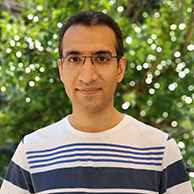
Research area: Computational systems neuroscience
HBHL Research Theme: Neuroinformatics and Computational Modelling (Theme 1)
Hiring department and faculty: Department of Physiology, Faculty of Medicine and Health Sciences
HBHL funding: $212,087
HBHL award start date: August 1, 2020
My lab seeks to develop computational models and algorithms that can explain, predict and regulate the brain’s neural responses and consequent behaviours during visual tasks, especially ones that require short- and longterm memorization. Our research builds on various tools and theories developed in machine learning, neuroscience and cognitive science.
Danilo Bzdok
Studying human-defining cognition in the higher association cortex from a big-data perspective

Research area: Computational neuroscience
HBHL Research Theme: Neuroinformatics and Computational Modelling (Theme 1)
Hiring department and faculty: Biomedical Engineering, Faculty of Medicine and Health Sciences
HBHL funding: $400,000
HBHL award start date: November 1, 2019
Drawing on a background in medicine, neuroscience and machine learning, my lab will explore, formalize and predict brain phenotypes of hidden population variation. To do this, we will capitalize on different data sources to tackle questions in systems neuroscience in an approach that also paves new ways for computational psychiatry.
Xiaoqian Chai
Development of memory networks in the human brain

Research area: Plasticity and learning
HBHL Research Theme: Applied Cognitive Neuroscience of Brain Plasticity (Theme 3)
Hiring department and faculty: Neurology and Neurosurgery, Faculty of Medicine and Health Sciences
HBHL funding: $325,000
HBHL award start date: August 1, 2019
My lab’s highly interdisciplinary research program combines brain imaging techniques with novel behavioural and computational methods to investigate memory processes in children. The first five years of the program will focus on outlining the relationship between the maturation of brain networks and memory development in neurotypical children and children with autism. In addition, the program investigates brain abnormalities in children who are at high risk for depression using publicly available datasets.
Mahsa Dadar
Detection and Assessment of Cerebrovascular Disease in Aging and Neurodegenerative Disease Populations

Research area: Neuroimaging-Genetics
HBHL Research Theme: Mechanistic Models of Neurodegenerative Disorders (Theme 2)
Hiring department and faculty: Department of Psychiatry, Douglas Mental Health University Institute and Faculty of Medicine and Health Sciences
HBHL funding: $200,000
HBHL Award start date: January 1, 2022
The aim of my research program is to detect biomarkers of cerebrovascular disease and assess their impact on clinical symptoms in aging and neurodegenerative dementias, with the ultimate goal of reducing the risk of cerebrovascular disease and, ultimately, dementia in the aging population. Since many risk factors associated with cerebrovascular lesions and their progression are potentially modifiable through treatment and lifestyle changes, studying the impact of these MRI signatures provides a potential avenue for preventing cognitive decline as well as further insights into the mechanisms and interactions through which cerebrovascular and neurodegenerative diseases cause cognitive decline.
Bruce Doré
Neural mechanisms of effective mental health messaging

Research area: Marketing & Social Neuroscience
HBHL Research Theme: Population Neuroscience and Brain Health (Theme 4)
Hiring department and faculty: Desautels Faculty of Management
HBHL funding: $381,855
HBHL award start date: January 1, 2021
My lab’s research program aims to identify brain mechanisms engaged by communications that successfully inform people of mental health topics and promote access and use of mental health services. Additionally, we aim to construct computational models that estimate the causal role of brain activity in translating these communications into behaviour change. Achieving these goals may advance theory and facilitate the dissemination of more effective messaging across initiatives in brain health and well-being.
Tasmia Hai
Mapping the Neural, Cognitive and Academic Mechanisms of Family Focused Interventions in ADHD
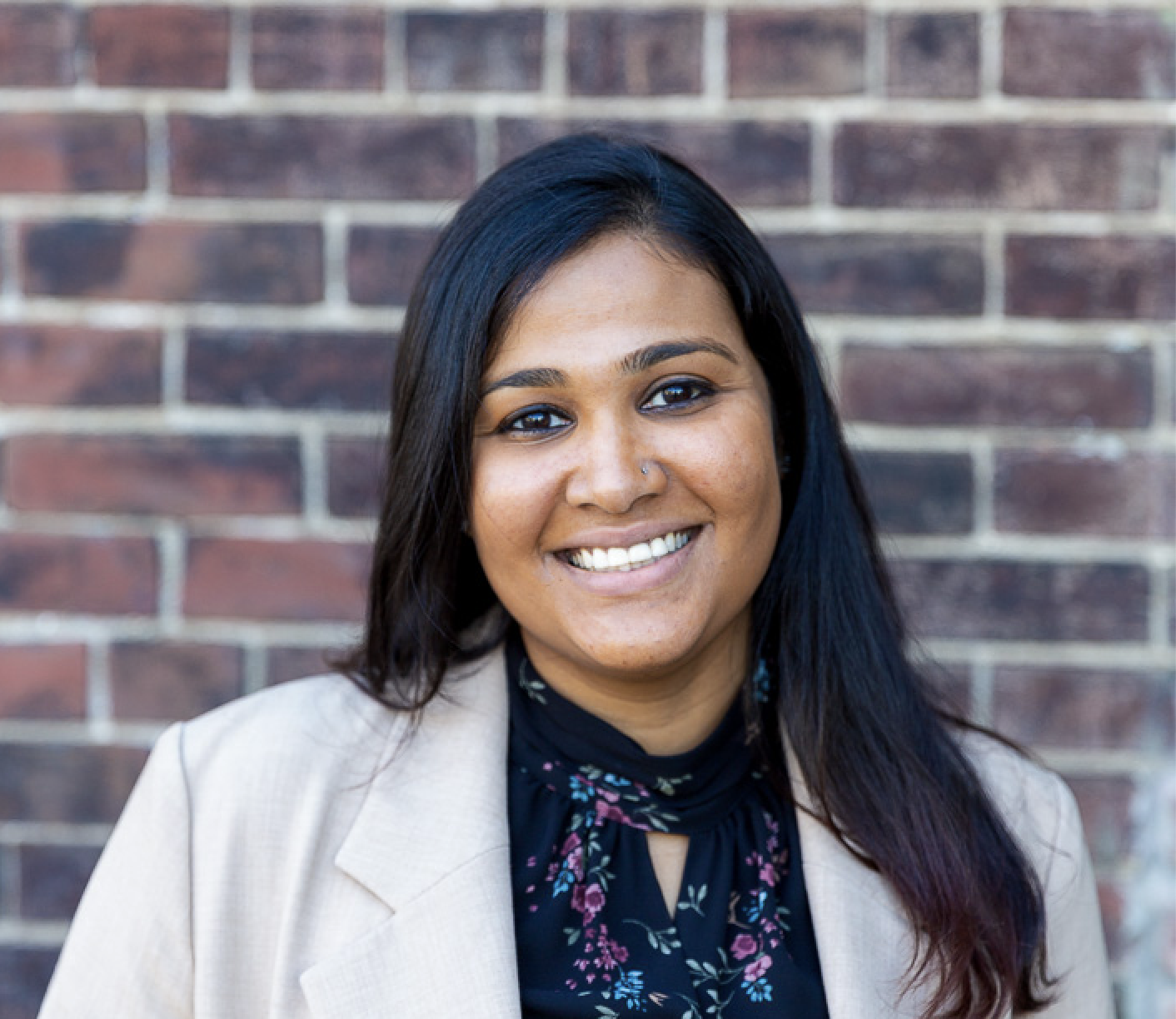
Research area: Clinical Research
HBHL Research Theme: Population Neuroscience and Brain Health (Theme 4)
Hiring Department and Faculty: Educational and Counselling Psychology, Faculty of Education
HBHL funding: $92,000
HBHL award start date: October 1, 2023
My research program aims to integrate neuroimaging techniques and behavioural outcomes (cognitive, social and academic functioning) to understand the mechanisms underlying different neurodevelopment disorders through an equity, diversity & inclusion lens. Specifically, my research is investigating the intersection of sociocultural factors with brain mechanisms and their impact on learning and behaviour for children with Attention-Deficit/Hyperactivity Disorder (ADHD). The secondary purpose of my research is to develop novel interventions based on identified neuroanatomical abnormalities and consider the intersection of factors such as ethnicity, socio-demographic status, race, gender and disability. My research will combine neuroimaging data with behavioural and academic functioning to create personalized treatment approaches that target the underlying neural dysfunctions. By integrating leading-edge neuroimaging techniques with innovative interventions, my research seeks to advance our knowledge of neurodevelopmental disorders and ultimately improve the lives of children affected by these disorders.
Manuela Ferrari
2.0 mental health services for healthy brains and healthy lives
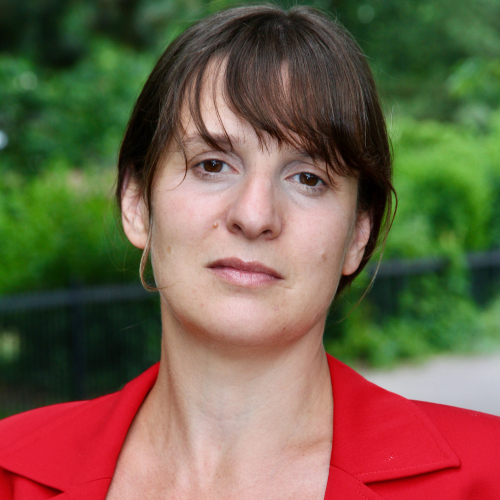
Research area: Digital mental health
HBHL Research Theme: Population Neuroscience and Brain Health (Theme 4)
Hiring department and faculty: Department of Psychiatry, Douglas Mental Health University Institute and Faculty of Medicine and Health Sciences
HBHL funding: $360,636
HBHL award start date: November 1, 2019
By enhancing the use of electronic mental health technologies in mental health services, my research program aims to overcome barriers limiting the availability of quality care in the mental health sector. Three areas make up the core of my lab’s program: e-mental health assessment and monitoring, e-treatment and web-based training.
Yasser Iturria-Medina
The Neuroinformatics for Personalized Medicine Lab
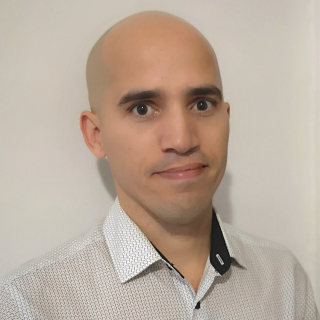
Research area: Computational neuroscience
HBHL Research Theme: Neuroinformatics and Computational Modelling (Theme 1)
Hiring department and faculty: Neurology and Neurosurgery, Faculty of Medicine and Health Sciences
HBHL funding: $300,000
HBHL award start date: August 1, 2018
This lab aims to define and apply complex brain models to better understand neurological disorders and identify effective personalized treatments for patients. To do this, we combine molecular, neuroimaging and cognitive data using mathematical modeling, which allows us to create brain models based on individuals and populations, which are then validated in different neurodegenerative diseases and real clinical scenarios.
Katie Lavigne
A FAIR and Open Approach to Cognitive and Brain Health in Transdiagnostic Psychiatry

Research area: Clinical research
HBHL Research Theme: Applied Cognitive Neuroscience of Brain Plasticity (Theme 3)
Hiring department and faculty: Psychiatry, Faculty of Medicine and Health Sciences
HBHL funding: $110,000
HBHL award start date: June 1, 2023
Cognitive deficits are experienced by many people with psychiatric disorders, regardless of diagnosis, and severely impact everyday life. Computer-based (digital) cognitive measures are key tools in understanding the underlying brain mechanisms of cognitive deficits, encouraging measurement-based care, and promoting sustainable cognitive health. While many measures exist, they are often not well-validated with psychiatric populations, costly to use, and limited to specific settings (laboratory, clinic, home) or digital devices (smartphones, tablets, brain imaging). My research promotes cognitive and brain health in mental illness by (1) developing an open-source digital cognitive health battery, (2) validating this battery for mental health research across various settings and devices, and (3) examining short- and long-term changes in cognition to model cognitive and brain health during disease progression. This work will produce an open cognitive battery for widespread use and provide insight into the strong links between cognitive deficits, brain alterations, and functioning in psychiatric disorders.
Yue Li
Computational methods to dissect the genetic, transcriptomic, and phenotypic complexity of the human brain

Research area: Computational neuroscience
HBHL Research Theme: Neuroinformatics and Computational Modelling (Theme 1)
Hiring department and faculty: Computer Science, Faculty of Science
HBHL funding: $162,500
HBHL award start date: January 1, 2019
Magnetic resonance imaging (MRI) has enormous potential for early diagnosis of brain diseases; but, because of the high cost of these machines, scans are expensive, and access is limited. Using DNA, cellular, molecular, neuroimaging, clinical and behavioural data from hundreds of individuals, we will train a machine learning model to predict what an individual’s MRI scan and brain-specific gene expression would look like given only their DNA sample. An individual’s risk of brain disease can then be predicted from this information.
Paul Masset
Distributed neural representations for efficient learning and inference

Research area: Computational Neuroscience
HBHL Research Theme: Neuroinformatics and Computational Modelling (Theme 1)
Hiring Department and Faculty: Department of Psychology, Faculty of Science
HBHL funding: $110,000
HBHL award start date: April 1, 2024
My research program combines experimental and theoretical approaches across experimental psychology, neuroscience, and machine learning to understand how brain circuits learn and represent abstract components of behaviours and cognition. We seek to understand how different types of neurons in brain circuits can implement efficient distributed computations. We will record neural activity of identified neuron subpopulations in rodents performing complex behavioural tasks and exploit recent developments in machine learning to discover computational principles in the brain. In parallel and as part of a symbiotic process, we will apply recent insights from neural circuits to develop new biologically-inspired distributed artificial network architectures that are both data and energy efficient. In the longer term, this research will guide the development of novel diagnostics and treatments for mental and neurodegenerative diseases.
Michael MacKenzie
Transactional processes in early trauma and child welfare

Research area: Social neuroscience
HBHL Research Theme: Population Neuroscience and Brain Health (Theme 4)
Hiring department and faculty: Social Work, Faculty of Arts
HBHL funding: $349,255
HBHL award start date: March 1, 2019
My research program seeks to inform both our understanding of normative development and barriers to well-being and mental health for more vulnerable populations of children. My work combines efforts to clarify how children experience adversity and instability with a focus on using basic developmental research to design and test more effective interventions. The program is pursued in partnership with governmental child welfare agencies in Canada and the United States, as well as provider agencies offering a range of services from in-home support to out-of-home placement.
Romina Mizrahi
Molecular imaging of young brains
 Research area: Computation modeling of visual perception and working memory in primates
Research area: Computation modeling of visual perception and working memory in primates
HBHL Research Theme: Applied Cognitive Neuroscience of Brain Plasticity (Theme 3), Population Neuroscience and Brain Health (Theme 4)
Hiring department and faculty: Department of Psychiatry, Douglas Mental Health University Institute
HBHL funding: $396,630
HBHL award start date: September 1, 2020
My lab will build a program for accelerating translation of preclinical and postmortem research into innovative treatments for young people in Canada. Specifically, I propose the development of a Center for Clinical and Translational Sciences, which will aim to develop a recruitment core and clinical research infrastructure integrated into the Douglas for translational research activities, establish a new neuroimaging PET infrastructure, establish a new clinical trial unit, and support trainees through the development of a mentoring program.
Majid Mohajerani
Fundamental mechanisms of sleep regulation and brain fatigue
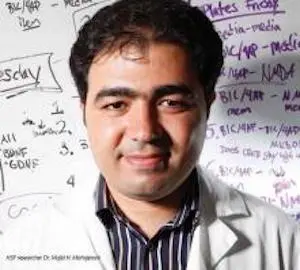
Research area: Plasticity and learning
HBHL Research Theme: Applied Cognitive Neuroscience of Brain Plasticity (Theme 3)
Hiring department and faculty: Psychiatry, Faculty of Medicine and Health Sciences
HBHL funding: $92,000
HBHL award start date: September 1, 2023
My group research program concentrates on neural dynamics with particular emphasis on sensorimotor integration and memory systems. We combine optical imaging, electrophysiology and behavioural methods and computational tools to understand how different brain areas communicate with one another and how (a) memory is encoded and consolidated, (b) how sleep influences memory processing in whole brain networks and which internal and external factors can influence this processing, and (c) motor movement are generated based on sensory inputs. In addition, may lab develop technologies to facilitate recording brain activity across multiple spatial scales and establishing methods to expand the range of behaviours that can be studied in the mouse model system.
Lena Palaniyappan
Neuroscience Informed Early Interventions for Youth Mental Health

Research area: Clinical neuroscience of psychiatry
HBHL Research Theme: Population Neuroscience and Mental Health (Theme 4), Applied Cognitive Neuroscience of Brain Plasticity (Theme 3)
Hiring department and faculty: Department of Psychiatry, Douglas Mental Health University Institute
HBHL funding: $363,000
HBHL award start date: April 1, 2022
Mental disorders are some of the largest contributors of human suffering across the globe. This large burden is attributed to two vicious aspects of many psychiatric disorders: (1) they start at a young age and (2) they are recurrent in nature. At present, we know very little about why the common but distressing mental experiences in youth persist in some but perish in others. Understanding the neural basis of recovery will help us to avoid recurrences. Our group, located at the new Centre for Youth Mental Health at the Douglas, will use the tools of neuroscience – especially advanced neuroimaging technology and biobehavioural models - to study the relapsing and recurring nature of illnesses such as psychosis, bipolar disorder and depression. The broader focus of our program is to develop neuroscience-informed early interventions for the youth. We anticipate these interventions to eventually replace the current practice of transposing the treatments used for severe mental illnesses to emerging issues of the youth
Jean-Baptiste Poline
Methodological aspects of neuroimaging and imaging genetics, reproducibility and neuroinformatics

Research area: Neuroinformatics
HBHL Research Theme: Neuroinformatics and Computational Modelling (Theme 1)
Hiring department and faculty: Neurology and Neurosurgery, Faculty of Medicine and Health Sciences
HBHL funding: $200,000
HBHL award start date: August 1, 2018
My laboratory research program is organized around three main areas. First, to better understand brain systems and their relation to causes of brain disease, we are developing statistical and machine learning methods and tools to analyze neuroimaging and genetics data in relation to demographic, behavioural or clinical variables using large databases (e.g. the UK BioBank). Second, we are working to produce and encourage more reproducible, FAIR and open science in the fields of neuroimaging and imaging genetics, and more generally in the neurosciences, life sciences, and data science. We work on developing training material, designing and performing meta analyses, and engaging in the evolution of 'what' and 'how' we publish research. Related to this, our third area of focus is the development of neuroinformatics tools to equip neuroscientists with the necessary infrastructures to more easily disseminate, document and combine datasets, and generate re-usable pipelines and analysis methods (HBHL NeuroHub, Canadian Open Neuroscience Platform). We are also working to make these research objects publishable and acknowledged in the traditional academic system through projects such as Aperture and NeuroLibre.
Jean-Francois Poulin
Mapping dopamine neuronal Circuits in health and disease

Research area: Cellular and tissue models
HBHL Research Theme: Mechanistic Models of Neurodegenerative Disorders (Theme 2)
Hiring department and faculty: Neurology and Neurosurgery, Faculty of Medicine and Health Sciences
HBHL funding: $400,000
HBHL award start date: August 1, 2019
My lab has developed novel transgenic approaches to demonstrate that different subtypes of dopamine neurons display distinct axonal projections, and has also shown that one particular subtype is more vulnerable to Parkinson’s disease. These findings strongly suggest that each subtype is potentially associated with a specific circuit, function and/or disease. Our future research aims to investigate how dopamine circuits are altered in transgenic mouse models of neurodevelopmental and neurodegenerative disorders.
Rachel Rabin
Neural correlates of social cognitive deficits in schizophrenia patients with and without cannabis use

Research area: Addictions
HBHL Research Theme: Applied Cognitive Neuroscience of Brain Plasticity (Theme 3)
Hiring department and faculty: Department of Psychiatry, Douglas Mental Health University Institute
HBHL funding: $185,860
HBHL award start date: January 1, 2020
To examine the effects of chronic cannabis use on social cognition and underlying brain structure, my lab compares social cognitive performance in cannabis-using patients with schizophrenia and non-cannabis using patients with matched controls. Brain imaging scans are also completed to assess brain health in regions with high concentrations of cannabinoid receptors that also facilitate social processing. Findings from this study will highlight factors that contribute to social dysfunction and help identify therapeutic targets to improve treatments for individuals suffering from schizophrenia and/or cannabis addiction.
Delphine Raucher-Chéné
The Bipolar and Cognition in Enhanced Psychiatric Services (BiCEPS) project: Remote Measurement-Based Care for Bipolar Disorder

Research area: Clinical research
HBHL Research Theme: Population Neuroscience and Brain Health (Theme 4)
Hiring department and faculty: Psychiatry, Faculty of Medicine and Health Sciences
HBHL funding: $110,000
HBHL award start date: May 15, 2023
Bipolar disorder (BD) is a complex and chronic psychiatric condition that usually begins in late adolescence and continues into adulthood. Formalizing its assessment, in all its dimensions, will help the clinician gain an accurate picture of the situation and propose appropriate care. In this context, digital technology can improve the accessibility of a comprehensive assessment and expand the possibilities of intervention. Our project called BiCEPS (Bipolar and Cognition in Enhanced Psychiatric Services) will contribute to the development of a comprehensive assessment of BD through a digital platform that will allow us to more finely characterize the patient experience and propose innovative remote interventions dedicated and adapted to this population.
Blake Richards
Towards general principles of intelligence

Research area: Computational neuroscience
HBHL Research Theme: Neuroinformatics and Computational Modelling (Theme 1)
Hiring department and faculty: Neurology and Neurosurgery, Faculty of Medicine and Health Sciences
HBHL funding: $250,000
HBHL award start date: August 1, 2019
My research program’s central goal is to understand the general principles of intelligence and learn how those apply to both natural and artificial agents (i.e. humans and machines). This research program is cyclical, as we first use experimental data on learning in human neural circuits to inform the design of new machine learning systems. In turn, we use machine learning to help us analyze and understand learning algorithms in the real brain. The program’s long-term goal is to map neural circuit functions to behaviour and cognition.
Dana Small
Uncovering the logic of human gut-brain signalling in health and disease
Research area: Neuroimaging and genetics
HBHL Research Theme: Applied Cognitive Neuroscience of Brain Plasticity (Theme 3)
Hiring department and faculty: Neurology & Neurosurgery, and Medicine, Faculty of Medicine and Health Sciences
HBHL funding: $400,000
HBHL award start date: May 1, 2023
All organisms must procure energy to survive. Thus, behaviour and metabolism must be integrated. Our recent work shows that critical signals underlying how food drives learning in humans are generated during nutrient metabolism and conveyed outside of conscious awareness to modulate dopamine release and support learning. We hypothesize that conscious oral sensations (e.g. flavour) serve as both sensory outcomes and metabolic predictions, allowing conscious and unconscious nutrient sensing to be integrated. The system is multivariate, with different sources of energy (e.g., fat vs. glucose) signaling through distinct pathways of the “gut-brain axis” that can interact to enhance learning and thereby promote variety in food intake. These body–brain circuits undergo plasticity, adapting over time to tune perception, metabolism and learning to a changing food environment. We will test these ideas in humans using high-field fMRI and other advanced neuroimaging methods, combined with sophisticated manipulations of diet and metabolism.
Aparna Suvrathan
The cerebellum in health and disease: from synapses to behaviour
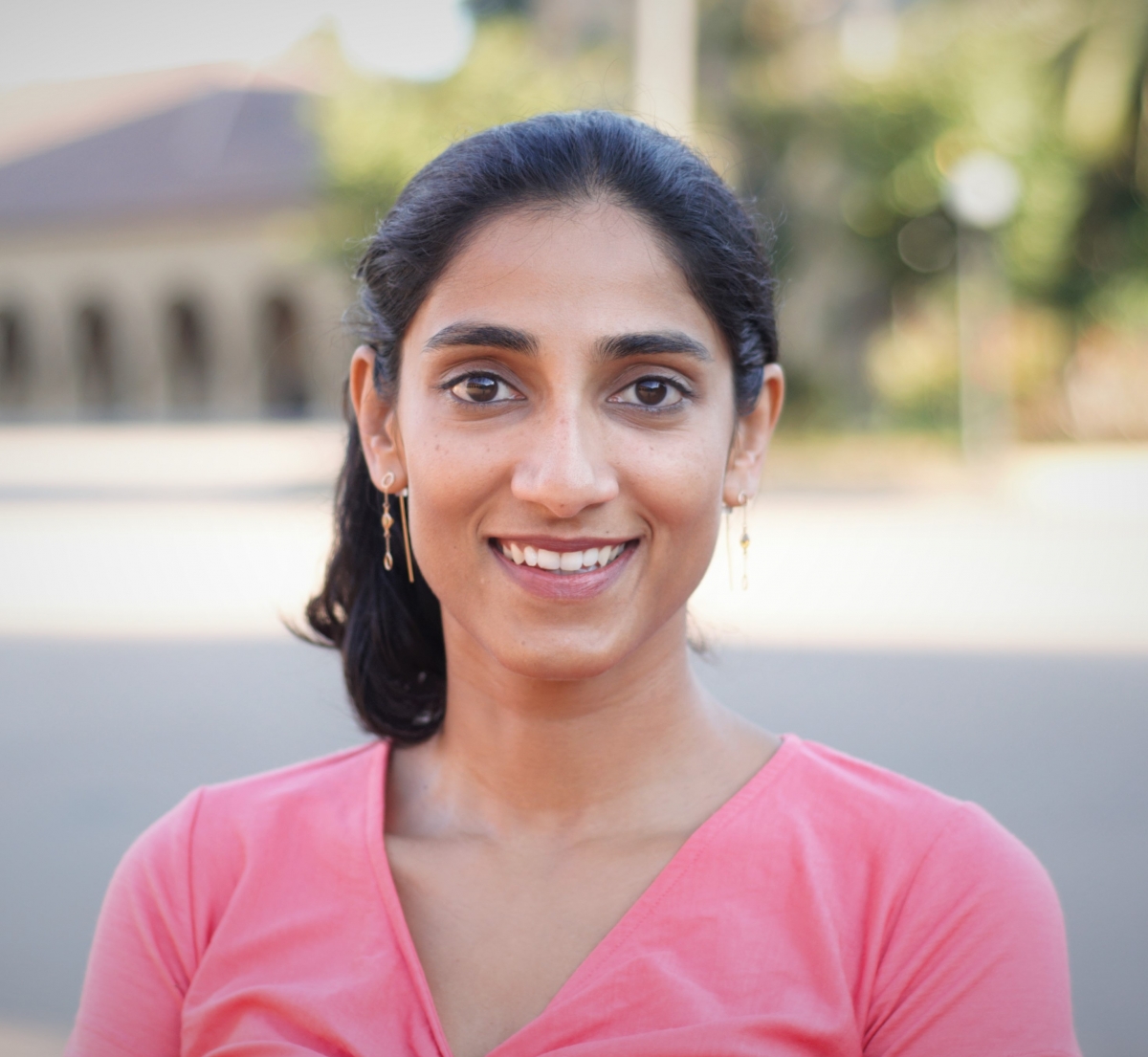
Research area: Plasticity and learning
HBHL Research Theme: Applied Cognitive Neuroscience of Brain Plasticity (Theme 3)
Hiring department and faculty: Neurology and Neurosurgery, Faculty of Medicine and Health Sciences
HBHL funding: $229,500
HBHL award start date: November 1, 2018
My lab aims to identify how brain plasticity at the synaptic, cellular and circuit levels results in learned behaviour. We can bridge these levels of analysis by investigating the cerebellum, which is critical for a range of functions. We use electrophysiology, imaging, behavioural analysis and molecular-genetic tools in rodents to understand learning in the normal brain. Using this framework, we then determine how cerebellar function may be different in autism spectrum disorders. As a result, our research will lead to new insight that is necessary for reducing the devasting effects of autism spectrum disorders and disorders of brain plasticity.
Nicolas Tritsch
Neurobiology of motivation
 Research area: Animal models, plasticity and learning, neurotechnology
Research area: Animal models, plasticity and learning, neurotechnology
HBHL Research Theme: Population Neuroscience and Brain Health (Theme 4)
Hiring department and faculty: Department of Psychiatry, Douglas Mental Health University Institute, Faculty of Medicine and Health Sciences
HBHL funding: $92,000
HBHL award start date: August 1, 2024
The Tritsch laboratory seeks to understand how the brain selects and motivates motor actions in health and in disease. Our research program is particularly interested in unraveling how molecules like dopamine modify neural activity to orchestrate behaviour, as many disorders of the nervous system are rooted in dysfunction of dopamine, including Parkinson’s disease, schizophrenia, addiction, anxiety and mood disorders. To do so, we leverage diverse functional techniques such as electrophysiology, two-photon imaging, optogenetics and molecular genetics in rodents. We are driven by a deep curiosity into mechanisms of action at the molecular, cellular and circuit levels, but also by the genuine conviction that mechanistic insights are key to our understanding of neuropsychiatric disorders and to the development of effective therapies.
Stephanie Zandee
Understanding Multiple Sclerosis lesion pathology at a single cell level

Research area: Neuroimmunological diseases, Computational neuroscience
HBHL Research Theme: Mechanistic Models of Neurodegenerative Diseases (Theme 2), Neuroinformatics and Computational Modelling (Theme 1)
Hiring department and faculty: Department of Neurology and Neurosurgery, Faculty of Medicine and Health Sciences
HBHL funding: $92,000
HBHL award start date: August 1, 2024
The Zandee lab has the goal of understanding multiple sclerosis (MS) brain lesion evolution (formation, destruction, repair) at the transcriptomic and proteomic level using single cell approaches and machine learning (ML) methods. To achieve this, we are using fluorescent imaging in conjunction with single cell and bulk RNA-sequencing, tissue clearing with light sheet microscopy and machine learning on images to discover patterns in lesions. A specific interest of the lab is understanding the role of the novel anti-inflammatory cytokine IL-37 in human brain homeostasis and inflammation in the context of MS. For this project, we are using human MS brain tissue, mouse models of MS (called experimental autoimmune encephalomyelitis; EAE), confocal microscopy, cell culture of primary brain cells and flow cytometry.
Yashar Zeighami
Integrative modeling of brain trajectories in healthy and aging neurodegeneration: a multimodal imaging approach

Research area: Computational neuroscience, neuroimaging
HBHL Research Theme: Neuroinformatics and Computational Modeling (Theme 1)
Hiring department and faculty: Department of Psychiatry, Douglas Mental Health University Institute, Faculty of Medicine and Health Sciences
HBHL funding: $249,390
HBHL award start date: January 1, 2022
My lab research program aims to (i) create a comprehensive multi-scale model of structural and functional brain alterations across the lifespan using multimodal brain MRIs; (ii) investigate the link between observed MRI changes in post-mortem samples and the underlying cellular alterations, with translational applications for in vivo datasets; and (iii) identify the genetic and environmental risk factors that cause deviation from the normative brain-behaviour trajectories, to develop diagnostic and prognostic models.
Yang Zhou
Genetic dissections of neurological disorders
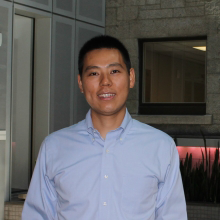
Research area: Animal models
HBHL Research Theme: Mechanistic Models of Neurodegenerative Disorders (Theme 2)
Hiring department and faculty: Neurology and Neurosurgery, Faculty of Medicine and Health Sciences
HBHL funding: $350,000
HBHL award start date: May 1, 2019
My lab is developing and applying technologies to engineer genetic mutations associated with neurological disorders in order to better understand how these mutations impact the neural circuits and behaviour in model organisms. This research will identify causes of disease and allow the testing of genetic-based therapeutic approaches, as well as investigations into how genetic disturbances of neural circuits influence learning and cognition.


